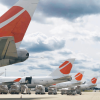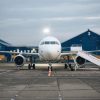 Despite the recent downturn in the aviation industry and the resulting drop in the number of operating airlines, the global fleet keeps growing further thus increasing the pressure on the aircraft maintenance segment. For instance, American Airlines has been recently rumoured to have instructed their mechanics to commit fraud and disregard certain safety precautions. Although these allegations have yet to be proven or dismissed, few could deny the fact that the ongoing pressure to squeeze costs has been a major task set for industry players in the recent years. The lack of qualified personnel doesn’t make the struggle any easier. Moreover, it signals that today the MRO industry might be suffering way more than we have expected.
Despite the recent downturn in the aviation industry and the resulting drop in the number of operating airlines, the global fleet keeps growing further thus increasing the pressure on the aircraft maintenance segment. For instance, American Airlines has been recently rumoured to have instructed their mechanics to commit fraud and disregard certain safety precautions. Although these allegations have yet to be proven or dismissed, few could deny the fact that the ongoing pressure to squeeze costs has been a major task set for industry players in the recent years. The lack of qualified personnel doesn’t make the struggle any easier. Moreover, it signals that today the MRO industry might be suffering way more than we have expected.
A single alternative to compromising on safety when it comes to cost-cutting is a focus on innovation and efficiency which cannot be achieved without highly experienced specialists. “However, in most cases it takes 5-to-8 years for a new technical specialist to acquire required practical experience and receive a licence. Moreover, the commercial industry’s opportunities to find specialist for other segments (mainly the defence segment) are also shrinking as military spendings worldwide are once again on the rise,” comments Skaiste Knyzaite, the CEO of AviationCV.com.
Meantime, the lack of experienced and licensed specialists both increases the pressure on the current staff and leads to pricey delays. After all, aviation is the industry where the saying “time is money” truly applies. According to the FAA, flight delays due to technical issues can cost up to 22 million dollars for U.S. based companies per year, while Eurocontrol states that European carriers lose an average of 72 Euros per minute if a single delay lasts longer than 15 minutes. Naturally, if the number of maintenance staff won’t keep up after the global fleet expansion, the aircraft downtime will be getting more costly with each year.
In addition, the issue of qualified MRO personnel impacts governmental operators as well. A recent report prepared by the U.S. Department of Homeland Security has revealed that poor maintenance had potentially affected the safety of the aircraft fleet operated by the U.S. Customs and Border Patrol. Amongst other, the report states that following maintenance works several airplanes had unsecured bolts and one helicopter’s rotor blades were incorrectly installed.
“The signals present – both reported and non-official – might actually be the warning symptoms of the system’s upcoming crack,” shares Skaiste Knyzaite, the CEO of  AviationCV.com. “We have already seen how the shortage of pilots forces airlines to slow down their expansion. Now the trend is transitioning to the MRO segment as well. And apart for the quality of provided works, the situation has completely changed the HR processes – now it’s not an employer who chooses the best employee, it’s a professional who is in the position to select the best employer. Even if an airline or an MRO finds a good certified mechanic or engineer and offers him a competitive salary (which can top the 51 000$/year average), it still cannot be sure if the potential candidate is going to choose the company. Today, in most cases it’s the experienced professional who makes the final call.”
AviationCV.com. “We have already seen how the shortage of pilots forces airlines to slow down their expansion. Now the trend is transitioning to the MRO segment as well. And apart for the quality of provided works, the situation has completely changed the HR processes – now it’s not an employer who chooses the best employee, it’s a professional who is in the position to select the best employer. Even if an airline or an MRO finds a good certified mechanic or engineer and offers him a competitive salary (which can top the 51 000$/year average), it still cannot be sure if the potential candidate is going to choose the company. Today, in most cases it’s the experienced professional who makes the final call.”
Meantime, while companies are on the quest to finding new employees, the pressure and workload for the existing staff is piling up, especially for the qualified and certified professionals. As a result, the increasing workload leads to human factor risks, including those related to fatigue and stress. In 2013 alone there were 90 accidents involving technical issues and one third of them was caused by a human factor (according to ICAO Safety report). In addition, Boeing indicates that over the last decade maintenance-caused aircraft accidents have almost doubled – up to 6%. Moreover, maintenance errors account for almost half of engine-related flight delays.
One of the ways to minimize HR-related risks is to plan ahead and maintain flexible HR strategies adaptable to the market changes. “The key to success is to avoid limiting your applicant search to a local market – there are qualified engineers and mechanics (especially under the age of 40) all around the globe who might be willing to expatriate. However, not all companies have the resources or experience to maintain continuous headhunting worldwide. Moreover, there are always ad hoc or short term needs, and without a vast database of potential specialists employers might just end up looking for employees for months. In other words, with the competition for experienced MRO staff becoming fiercer with every year, industry players should look for new, more flexible HR management solutions in order to control expenses and ensure that nothing jeopardizes flight safety,“ shares Skaiste Knyzaite, CEO of “AviationCV.com.”





